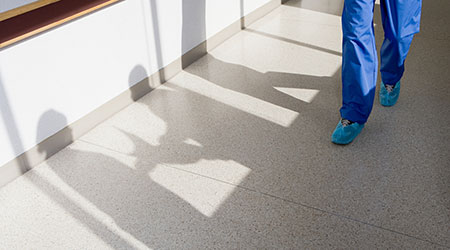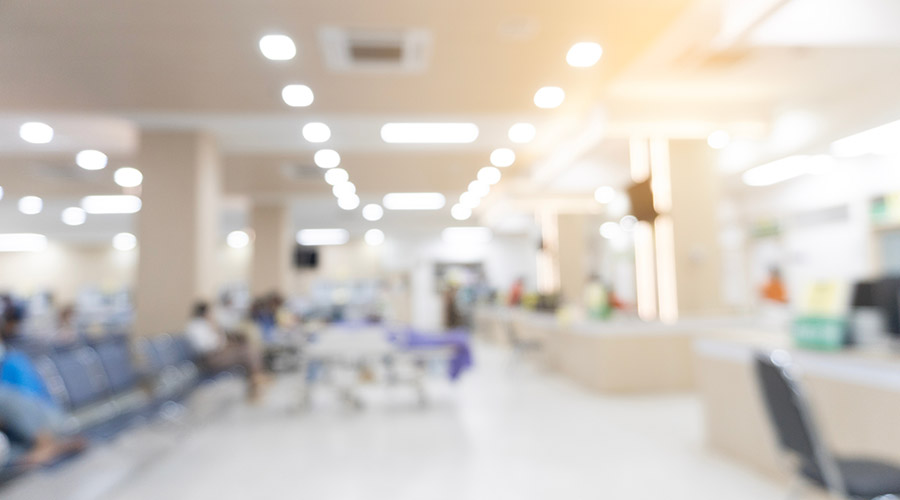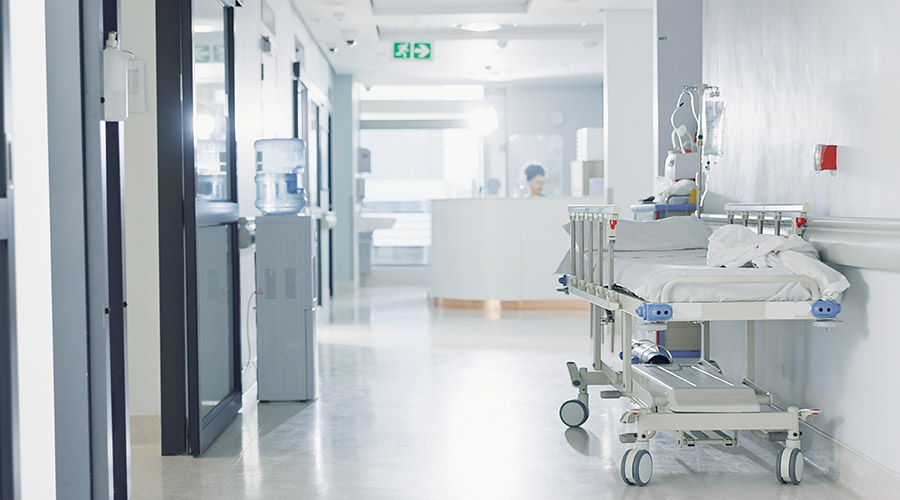Healthcare facility managers can’t afford to leave any stone unturned in their efforts to curtail hospital-acquired infections, and a new study suggests one likely source of the problem is right under their noses — well, feet, actually.
Floors in healthcare facilities might be an underappreciated source of pathogen spread, according to Health Facilities Management. The floors of hospital rooms are quickly and frequently contaminated with antibiotic-resistant bacteria within hours of patient admission, creating a route of transfer of potentially dangerous organisms to patients, according to a recent study, “Timing and Route of Contamination of Patient Rooms with Healthcare Associated Pathogens.” The study was published by Infection Control & Hospital Epidemiology.
Researchers with the Northeast Ohio VA Healthcare System closely tracked contamination in hospital rooms of 17 newly admitted patients to identify the timing and route of transfer of bacteria within patients’ rooms. Before testing, rooms were thoroughly cleaned and sanitized, and all patients screened negative for methicillin-resistant Staphylococcus aureus (MRSA) and other health care-associated bacteria.
Researchers then observed patients’ interactions with healthcare personnel and portable equipment, collecting cultures one to three times per day from patients, their socks, beds and other high-touch surfaces, as well as key sections of the floor.
Click here to read the article.

 Healthcare Real Estate: Challenges and Industry Shifts for 2025
Healthcare Real Estate: Challenges and Industry Shifts for 2025 Geisinger to Build $32 Million Cancer Center in Pennsylvania
Geisinger to Build $32 Million Cancer Center in Pennsylvania Sunflower Medical Group Experiences Data Breach
Sunflower Medical Group Experiences Data Breach Strategies to Eradicate Biofilm Containing C. Auris
Strategies to Eradicate Biofilm Containing C. Auris Man Attacks Nurses, Police Officer at Jefferson Hospital
Man Attacks Nurses, Police Officer at Jefferson Hospital